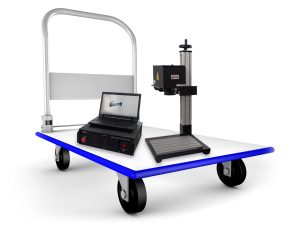If you’re looking for a new laser marking system, it’s important to do your due diligence so you purchase a solution that will deliver precisely what you need. Here are 6 steps you can take to make sure you make the right choice for your specific materials, workflow and marking application.
Step 1 – Compare Samples
Different laser engraving systems will mark your products with varying degrees of speed and quality. Some can actually damage your particular type of material with too much heat. Others could leave residual dots around the marked area or make a mark that does not show up well unless the light hits it just right. Getting samples will help you judge if a laser will do the job you want it to.
Here’s a word of caution about samples though. When you ask for samples, many low-cost laser suppliers will just send you a test plate with sample engravings. The trouble is – these may or may not have been made by the actual laser type you are considering. People who receive these well-manicured samples may wrongly assume that the laser they’re considering buying will engrave like this.
Step 2 – Test Mark on Your Actual Parts
When in doubt, it’s worth asking laser vendors if you can send them actual parts and artwork so they can generate custom marking samples for you. Companies that will do this generally have high-quality products that they support and service in-house. Those who can’t offer this service are likely to have inferior products and support infrastructure.
Step 3 – Demand the Quality Mark You Need!
There are a lot of things to consider when determining which solution will give you the best mark on your part. To make sure you’re making an apples-to-apples comparison, you need to compare three important aspects of your mark:
- Color Contrast – How legible is the mark? Does the color provide enough contrast, or do you need to see it just right under the light? Would it be better to have high-contrast annealing marking?
- Resolution – Is it a clean, high-resolution mark? Or are there stray laser divots (small dots) around the mark?
- Depth or Lack Thereof – How deep do you want your mark to be? You may like a deep mark if you make jewelry, but you may not if you are producing aircraft components.
Step 4 – Consider Specific Parameters
Buying a laser isn’t as simple as saying, “I need a good, fast mark.” You should familiarize yourself with the different options available to you when it comes to:
- Power Level – How much power does the laser beam need to mark your part with?
- Step Size – How far apart do you need individual pixels (dots) to be?
- Pulse Count – How many times does the laser light need to keep hitting the material before it moves on to the next pixel?
- Passes – How many times does the laser need to go over the image?
Companies that offer flexible software make it easy for you to address the precise power, step size, spacing and passes you want for your laser marking. Without flexible software, you may have to drastically adjust your expectations to what the laser you purchase can actually do.
Step 5 – Look at Speed vs. Quality Tradeoffs
Marking speed or cycle time is another important aspect to consider. This is really a question of how much speed matters in your production process. You might find a laser that produces an exceptional mark but takes 30 seconds to produce it when you’d like this to happen in three. In cases like this, you may need to strike a compromise between quality and speed. In some engraving applications like customization, speed may not even matter, while in high throughput production settings, speed is everything.
Step 6 – Find out What Type of Laser You Want
Most manufacturers produce only fiber lasers in either standard or MOPA (master oscillator power amplifier) configurations. But if you need to mark plastics or other sensitive or specially sized materials, you might find that a DPSS (diode-pumped solid-state) laser better suits your needs. DPSS lasers include YVO4 (yttrium orthovanadate), YAG (yttrium aluminum garnet) or Green lasers.
Not many vendors will give you a complete range of laser marking systems, but it’s worth exploring them all to see what’s best suited for your marking and engraving needs. Just as car buyers may want to consider between a gas engine, an electric car or a hybrid, you should explore what type of laser suits your needs best.
Working with RMI Laser
When you work with RMI Laser, you will notice a big difference in the level of expertise and service we provide. We are 100% committed to helping you get the absolute best mark for your part. We provide all of the services needed to make sure you get what you need by:
- Getting you samples quickly
- Providing custom samples with your artwork and materials
- Helping you get the exact mark quality you want
- Addressing your specific parameter requirements with our flexible and customizable software
- Addressing both your speed and quality issues
- Offering a complete range of laser options in Fiber (standard and MOPA) or DPSS (YV04, YAG and Green)


